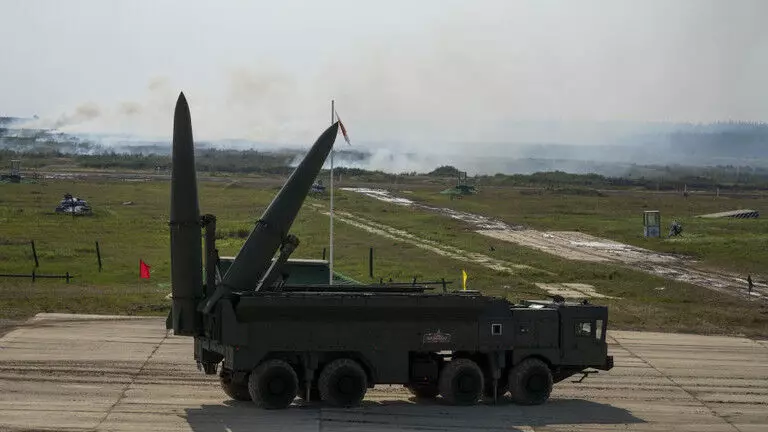The International Military-Technical Forum “Army 2022” at Kubinka military training ground in Moscow showcased an impressive display by the Iskander-M missile launcher, demonstrating its advanced capabilities. This comes as Russia is poised to start manufacturing intermediate and shorter-range missiles that were previously banned by the now-defunct INF Treaty, according to a statement made by Russian President Vladimir Putin on Thursday.
The Cold War-era Intermediate-Range Nuclear Forces (INF) Treaty had prohibited these systems, but the United States withdrew from it in 2019. Moscow had maintained the ban so long as Washington adhered to it as well. As I’ve said, in connection with the US withdrawal from this treaty and the announcement that they are starting production, we also consider ourselves entitled to start research, development, and in the future, production,” Putin explained during a press conference following the Shanghai Cooperation Organization (SCO) summit in Astana, Kazakhstan.
The Russian defense industry is prepared to begin producing these intermediate and shorter-range missiles as a response to the US withdrawal from the treaty. We are conducting this R&D, and we are ready to start production. We have already, in principle, given the relevant instructions to our industry,” Putin added during his speech.
The possibility of resuming production of previously banned missile systems was brought up by Putin during a meeting of the National Security Council in Moscow last week, citing the “hostile actions” of the United States as justification. Washington’s moves left Moscow with no choice but to revive its intermediate-range and short-range programs, he said, adding that they would be deployed “based on the actual situation, if necessary.
The 1987 INF treaty had banned both the US and Soviet Union from producing and fielding ground-based ballistic and cruise missiles – as well as their respective launchers – with ranges of 500 to 5,500 km (310 to 3,420 miles. The treaty did not affect air- or sea-based systems with the same range. This helped lower the tensions over the deployment of nuclear weapons in Europe.
Russia as the successor to the USSR continued to adhere to the treaty, while raising concerns that US installations in Eastern Europe – ostensibly designed as missile defenses – violated the treaty because their launchers were capable of deploying ground-attack munitions as well. In 2019, Washington pulled out of the treaty, accusing Moscow of having violated it without offering evidence to back up that claim.

